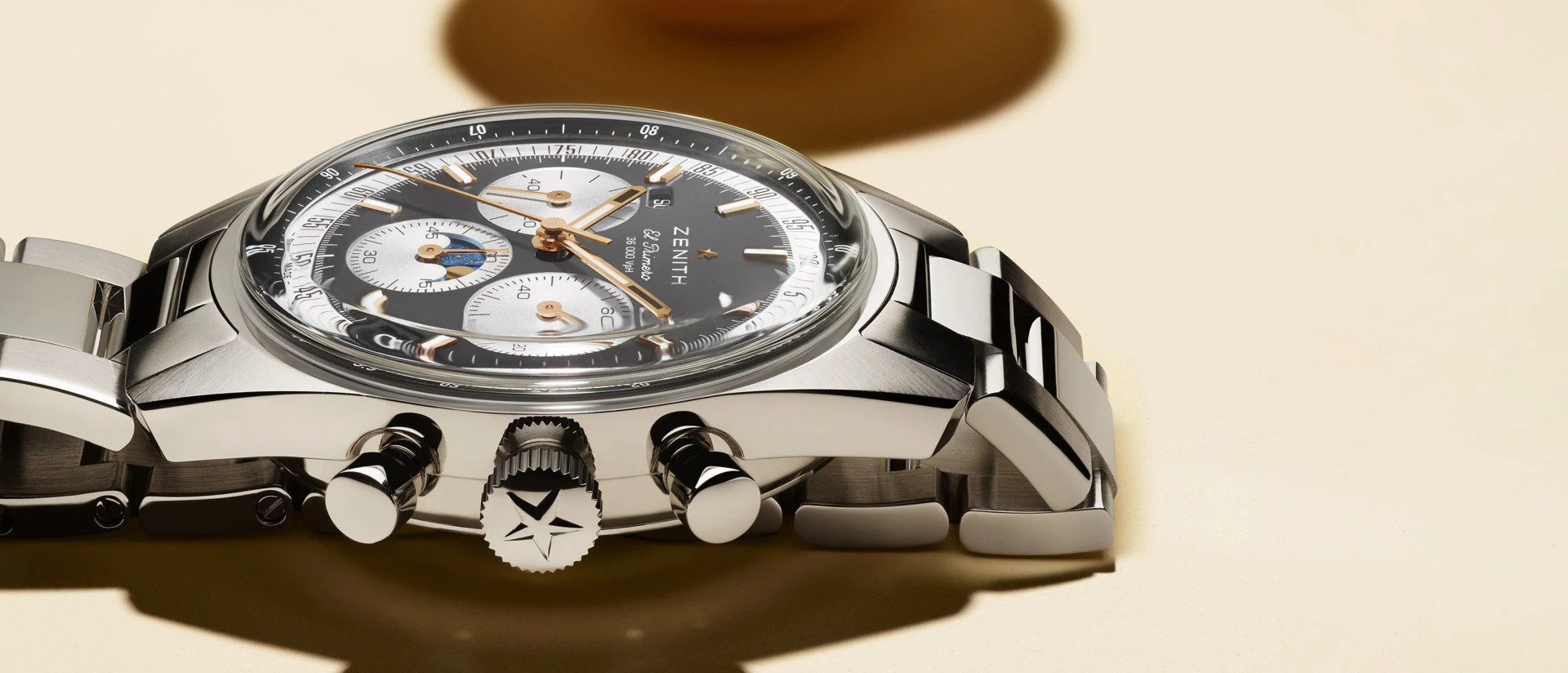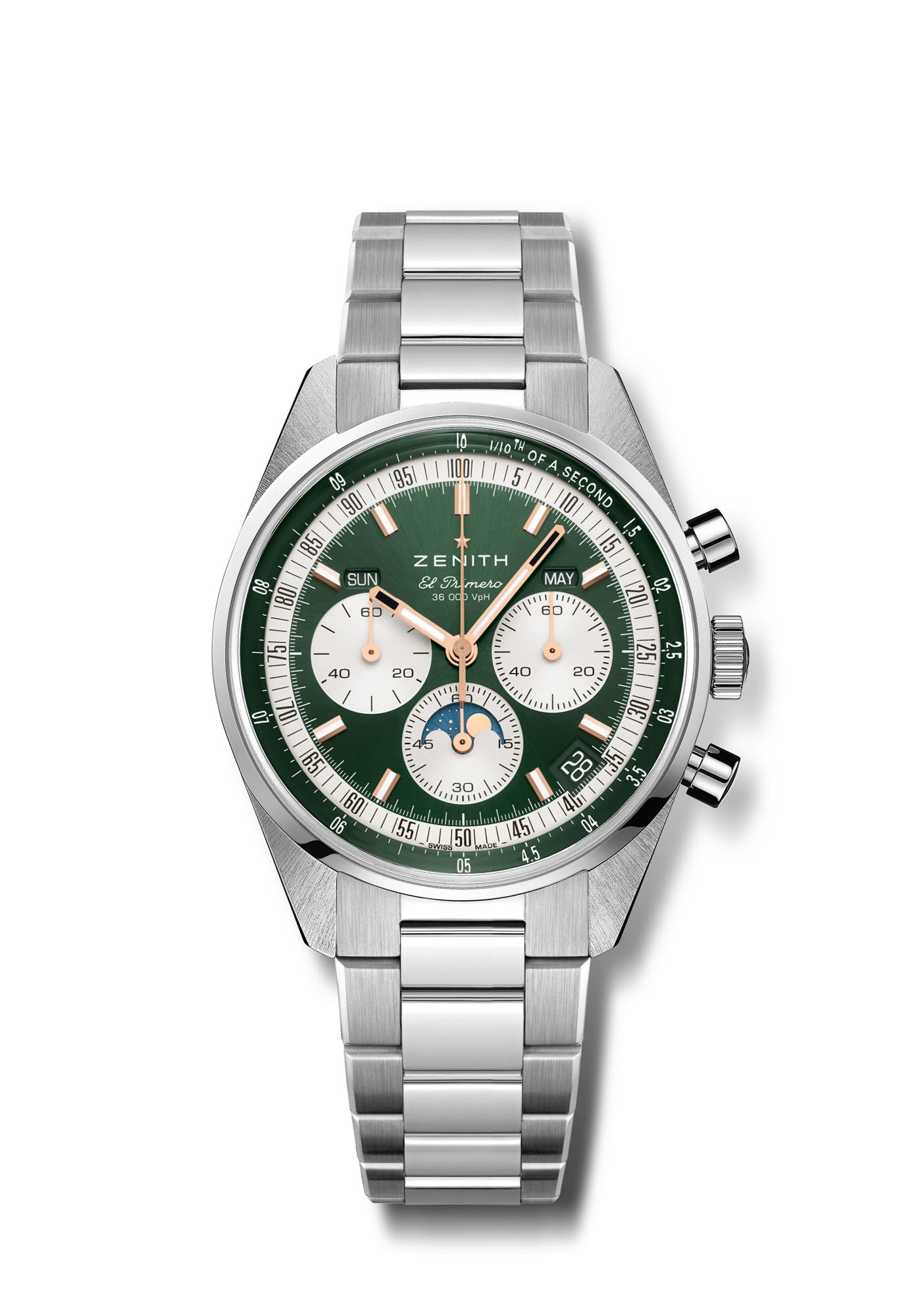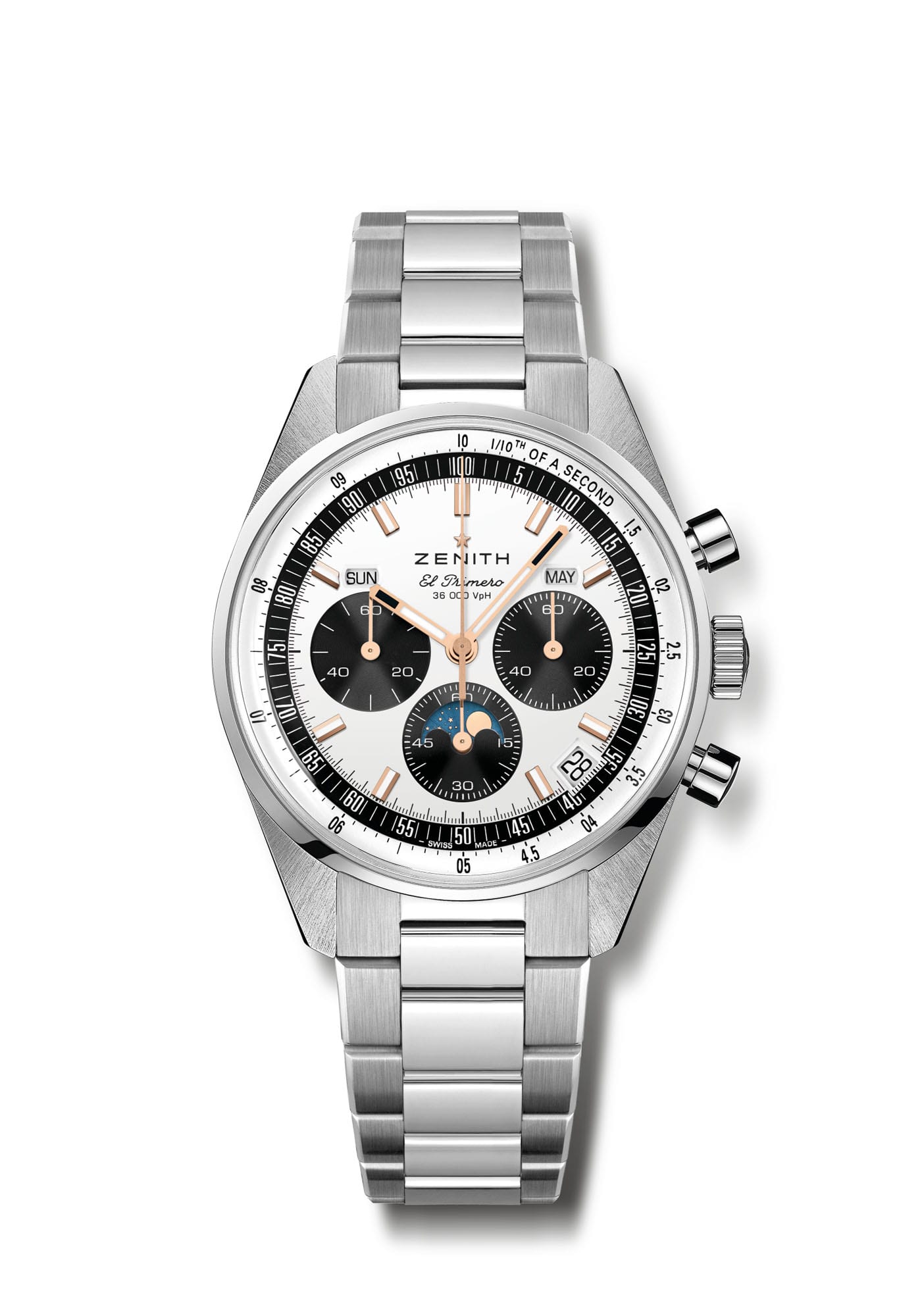Zenith Upgrades Chronomaster Original Triple Calendar Watch
A new twist on a classic timepiece.

55 years in the making is plenty of time to plot a course of action and innovation in the watchmaking world: Just ask Zenith, which looked to the past to offer up a new take on a classic, the Zenith Chronomaster Original Triple Calendar.

At the heart of its latest LVMH Watch Week is an homage to the 1969 original: In fact, the triple chronograph watch is “based on the exact blueprint and proportions of the A386 from 1969.”
Those specs are eye-catching in their own right, as the timepiece features both triple calendar and moon phase functions, all the while housing its 1/10th of a second chronograph for extreme precision.

The laundry list of distinct, impressive features, not unlike its groundbreaking skeleton watches or sporty yet sleek options like the Zenith Defy Extreme, carries forward from there in bold fashion.
It notably features a date window at the 4:30 marking on the timepiece, but the moon phase is undeniably the most eye-catching feature.

It also features style points aplenty in both of its two iterations, including a striking white “panda” opaline dial with black counters and 1/100th of a second scale, and a slate grey option.
A handsome sunburst olive-green tone dial option joins the lineup as the Boutique Edition exclusive of Zenith’s latest legendary watch, offering options to suit every preference.
The legendary El Primero automatic high-frequency chronograph calibre movement within keeps things running swiftly, and a 60-hour power reserve is a highly functional feature alongside stylish strap options.

For good measure, its sapphire display back showcases the intricate inner workings in handsome fashion.
Features like a three-link steel bracelet offer sporty appeal, while a black calfskin strap option elevates the Chronomaster Original to a handsome dress watch.
At $13,900, the Zenith Chronomaster Original is an investment-level timepiece that shows that even five decades after its launch, the OG option is still a worthy blank canvas for future innovation.
